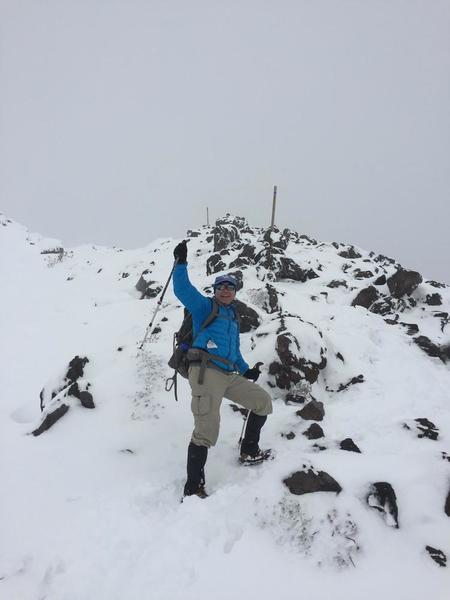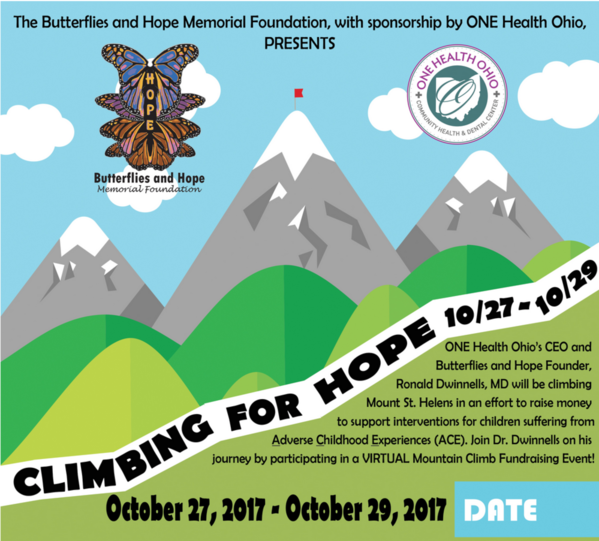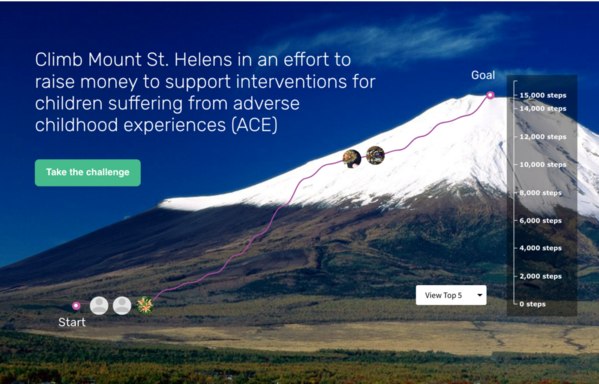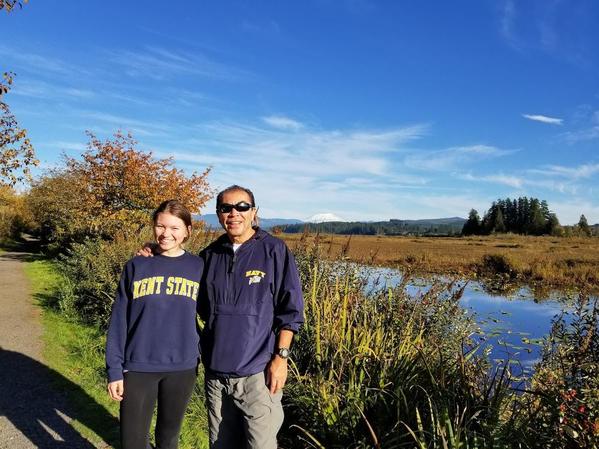Dr. Ronald Dwinnells, struggling to hold a banner celebrating Climbing for Hope for ACEs, atop 8,366-foot Mount St. Helens in 50 mph winds.
________________________________
Over this last weekend, 104 people in Youngstown, Ohio, climbed Mount St. Helens...virtually. At the start of the climb, on Friday, the weather was a balmy 70 degrees. By Sunday, it was a brisk 44. The elevation, however, remained at a steady 850 feet.
They were inspired to take 5,000 steps a day for three days to equal the distance — if not the huffing and puffing of a real ascent — covered by Dr. Ronald Dwinnells, chief executive officer of ONE Health Ohio to the top of Mount St. Helens. ONE Health is a federally qualified health center that serves 25,000 people in four communities in Northeast Ohio.
Dwinnells, a pediatrician by training, has been climbing mountains for several years. After his mother's death in 2016, he founded the Butterflies and Hope Memorial Foundation to "transform the lives of children afflicted with depression, addiction and other behavioral health problems."
Last year, he also learned about the CDC-Kaiser Permanente Adverse Childhood Experiences Study and related ACEs science. So, he decided to dedicate his climbs to children suffering from ACEs, and use his expeditions as opportunities to raise funds to support ACEs activities in his local community.
In June, he climbed Mount Fuji in Japan. Then, on October 13, he climbed Mount St. Helens. The summit elevation is at 8,366 feet, but with all the switch-backs, Dwinnells figured he took 15,000 steps. He commissioned a cool interactive web site where people could sign up for $5, and raise money as they climbed.
With "not a whole lot of marketing", they raised $3,500 from 104 people.
The Mount St. Helens climb was kept low-key to work out all the bugs in putting on a virtual climb. Next year, Dwinnells has set his sights on climbing Mount Kilimanjaro in Tanzania, and wants to entice hundreds of people to join virtually.
His climbing partner is his daughter, Abbey, a pre-med student at Kent State University, who has climbed 14 mountains with her dad.
Long before Dwinnells learned about ACEs science, his father became overwhelmed with diabetes, sunk into a deep depression and took his own life in 1984, when Dwinnells was a medical school resident. He often wondered if his father would have lived longer if his physician, in addition to asking him about his diabetes, had asked him if he was depressed. Shortly after Dwinnells turned 57, the same age his father was when he died, the tragedy prompted Dwinnells to develop a survey to find out how many of his center's patients had behavioral health problems.
"It turned out that 66.2% also had behavioral health issues," he said. "Two-thirds of adults coming in for medical problems also had alcohol and drug addiction, depression, anxiety, suicidal thoughts."
His six-question survey became part of the intake process, and all of the center's locations have behavioral health embedded in clinical health.
I'll get into more details about how the clinic is integrating ACEs science in another article, after I interview Chris Brugler, a nurse and long-time member of ACEs Connection, who now has the enviable title of ACE Coordinator at ONE Health.











Comments (2)